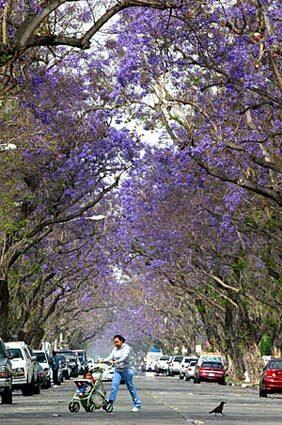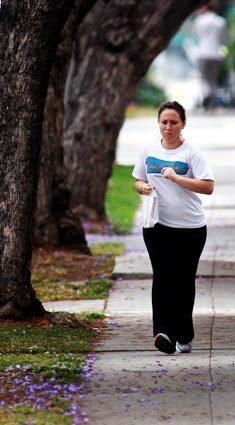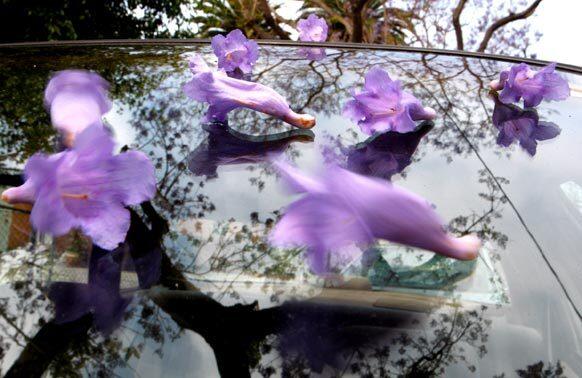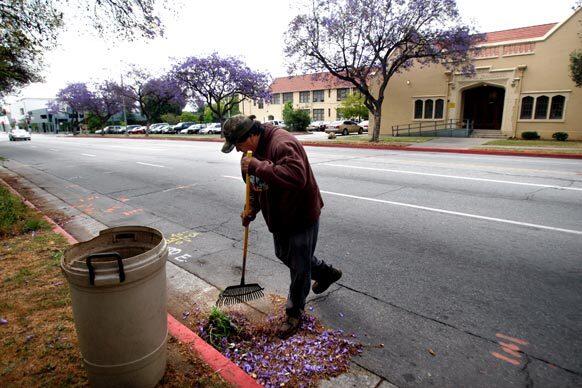Jacarandas: a beautiful mess

Ultraviolet-blue jacaranda trees, a staple of Southern California, are about a week from being in full bloom along Myrtle Street in Santa Ana. Although there are 49 species, the Jacaranda mimosifolia species is the popular one in Southern California and blooms twice a year for two months, once around April-May and then again around November-December. (Don Bartletti / Los Angeles Times)

Pamela Hopson, 26, jogs beneath jacaranda trees along Del Mar Boulevard in Pasadena. “I love hem. This is my favorite time of year,” she says. “It’s beautiful, and it is a mess. It’s once a year we can deal with the mess.” The trees infamously shed their flowers, frustrating property owners and gardeners. When smashed, the liquid inside the pods emits a sticky substance aphid waste in the bloom, not sap which can cause slippery pavement. Bug remover can usually remove the stickiness. (Francine Orr / Los Angeles Times)

Fallen jacaranda blooms roll in the spring breeze across a car’s windshield. Southern California jacarandas, which are nicknamed blue jacarandas, differ slightly in color from their siblings in the trees native South American homes in Argentina, Bolivia and Brazil, which are closer to blue than violet. The reason for the difference is that whatever seeds were first imported to California had the violet-tinted color and have widely been propagated over the decades. (Don Bartletti / Los Angeles Times)

Gerardo Mendez cleans the sidewalk beneath jacaranda trees that blanket Del Mar Boulevard from Arroyo Parkway to South Lake Avenue in Pasadena. He says the trees are beautiful and that he does not mind the cleanup. The trees are a selling point for real estate agents hoping to woo new residents to jacaranda-laden properties in a region synonymous with the concrete jungle. (Francine Orr / Los Angeles Times)







